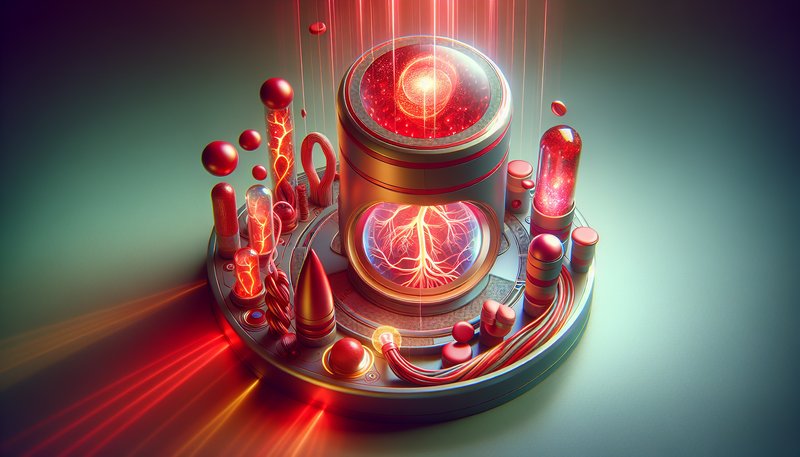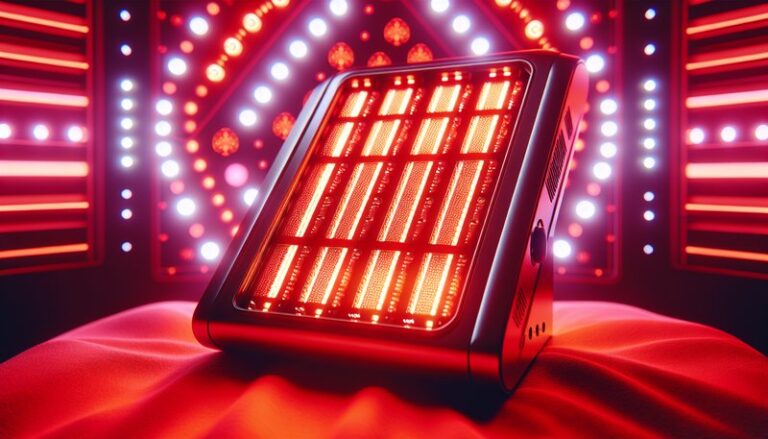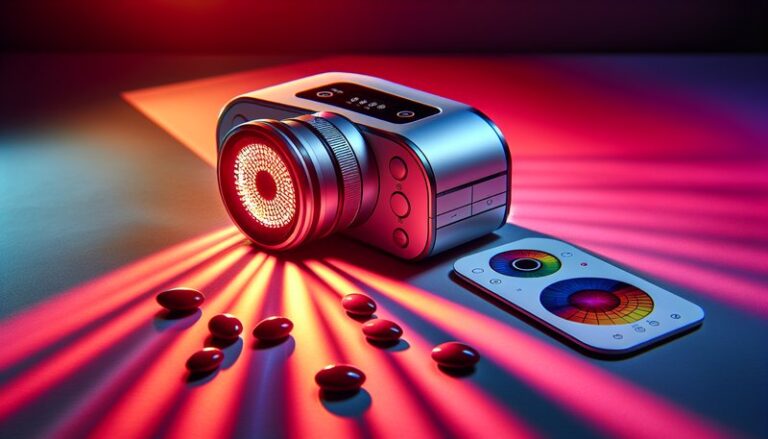Does Red Light Therapy Increase Blood Flow?
Does Red Light Therapy Increase Blood Flow?
How can a simple light therapy technique enhance circulation and promote healing?
This article will explore the relationship between red light therapy and blood flow. We will examine how red light therapy works, its benefits, and how it might help improve circulation. Additionally, we will consider alternatives and address common questions surrounding this innovative treatment.
Key Takeaways
- Red light therapy utilizes low-wavelength light to stimulate cellular activity and enhance blood flow.
- Increased circulation from red light therapy can aid in recovery from injuries and improve skin health.
- There are various alternatives to red light therapy that also promote blood flow and healing.
What is Red Light Therapy?
Red light therapy (RLT) is a non-invasive treatment that uses specific wavelengths of light, particularly in the red and near-infrared spectrum, to promote various healing processes within the body. It is thought to work by stimulating mitochondrial activity, leading to increased energy production (ATP) in cells. This boost in cellular energy can help in cell regeneration, reduce inflammation, and accelerate healing.
RLT has gained popularity in various fields, including dermatology for skin rejuvenation, sports medicine for injury recovery, and general wellness therapies. The therapy can be administered through handheld devices, LED panels, or specialized beds designed to treat larger areas of the body efficiently.
What are the Benefits of Red Light Therapy?
Exploring the advantages of red light therapy reveals that this treatment goes beyond enhancing blood flow. Below are several key benefits:
Increased Blood Flow
Research indicates that RLT can enhance microcirculation, which leads to improved oxygenation and nutrient delivery to tissues. This process is critical for healing and recovery, especially in the case of muscle injuries or joint pain.
Accelerated Healing
Studies have shown that red light therapy can promote faster tissue repair. Enhanced blood flow supports the transportation of necessary nutrients and immune cells to the affected areas, leading to quicker recovery times from injuries and surgeries.
Reduction of Inflammation
RLT has anti-inflammatory properties that help reduce swelling and pain. By improving circulation and delivering oxygen to damaged tissues, it can alleviate symptoms related to conditions such as arthritis and sports injuries.
Improved Skin Health
By promoting circulation to the skin, RLT can enhance collagen production, leading to firmer skin and a reduction in wrinkles and scars. This benefit is particularly appealing in cosmetic applications and skin rejuvenation treatments.
Enhanced Muscle Performance
Athletes have turned to RLT for its purported benefits in improving muscle endurance and performance. Increased blood flow might contribute to better muscle recovery post-exercise, allowing for improved training outcomes.
Is it Possible to Increase Blood Flow with Red Light Therapy?
Yes, it is possible to increase blood flow through the application of red light therapy. Various studies support the efficacy of RLT in enhancing microcirculation and promoting the release of nitric oxide, a crucial vasodilator that relaxes blood vessels and improves blood flow.
Discover the details in Can Red Light Therapy Aid Weight Loss?
What are the Advantages of Using Red Light Therapy?
Employing red light therapy has several distinct advantages, particularly for those seeking a non-invasive method to improve circulation.
Non-Invasive Treatment
Unlike surgical options, red light therapy offers a non-invasive alternative with minimal side effects. Patients can often resume normal activities immediately after a session.
Convenient and Painless
RLT is generally painless and requires minimal preparation. Most sessions last between 10 to 30 minutes, making it easily accessible for busy lifestyles.
Complementary Treatment
RLT can be effectively combined with other therapeutic modalities, such as physical therapy, to enhance overall treatment outcomes.
What are the Things to Consider Before Starting Red Light Therapy?
Before beginning red light therapy, certain considerations should be taken into account to ensure safety and efficacy.
Consultation with a Healthcare Provider
Always consult with a healthcare professional before starting RLT, especially if there are underlying health conditions or concerns about specific treatments.
Treatment Frequency and Duration
Understanding the recommended frequency and duration of sessions is essential for optimal results. Users should adhere to guidelines provided by qualified professionals.
Skin Type and Sensitivity
Different skin types may react differently to red light therapy. Individuals with sensitive skin should approach gentle treatment initially and monitor any reactions.
Read the deep dive Can Red Light Therapy Damage Eyes?
Existing Medical Conditions
Certain conditions may require caution. Those with photosensitivity or skin disorders should evaluate the use of RLT carefully.
What are the Alternatives to Red Light Therapy?
For those considering different options for increasing blood flow and promoting healing, several alternatives exist.
Massage Therapy
Massage promotes circulation through the manual manipulation of soft tissues. It can be beneficial for muscle relaxation, pain relief, and overall wellness.
Cold or Heat Therapy
Applying heat can dilate blood vessels and increase circulation, while cold therapy can reduce inflammation. Both methods can be effective but should be used appropriately for specific conditions.
Compression Therapy
Using compression garments or devices can effectively enhance blood flow, reduce swelling, and promote recovery after workouts or injuries.
Aerobic Exercise
Engaging in aerobic activities such as walking, running, or cycling naturally boosts blood circulation and contributes to overall cardiovascular health.
Conclusion: Is it Recommended to Use Red Light Therapy?
In summary, red light therapy shows promising potential in increasing blood flow and offering various other health benefits. As a non-invasive and convenient treatment option, it may be suitable for many individuals seeking to improve circulation, accelerate healing, and enhance skin health. However, it is essential to consider personal health circumstances and consult with a medical professional before starting treatment.
Frequently Asked Questions
How long does it take to see results from red light therapy?
Results can vary, but many users report noticing improvements in circulation and pain relief within a few weeks of regular treatment.
Are there side effects associated with red light therapy?
Generally, red light therapy is considered safe and well-tolerated; however, some individuals may experience mild redness in the treated area.
Can anyone use red light therapy?
While RLT is largely safe, individuals with specific health conditions or sensitivities should speak with a healthcare provider before starting treatment.
How often should I undergo red light therapy sessions?
The frequency of sessions can vary based on individual goals and treatment plans. Common recommendations include 2-3 times per week for optimal results.
Is home use of red light therapy devices effective?
Home-use devices can be effective; however, the efficacy often depends on the wavelength, intensity, and overall quality of the device. Always research products thoroughly before use.






